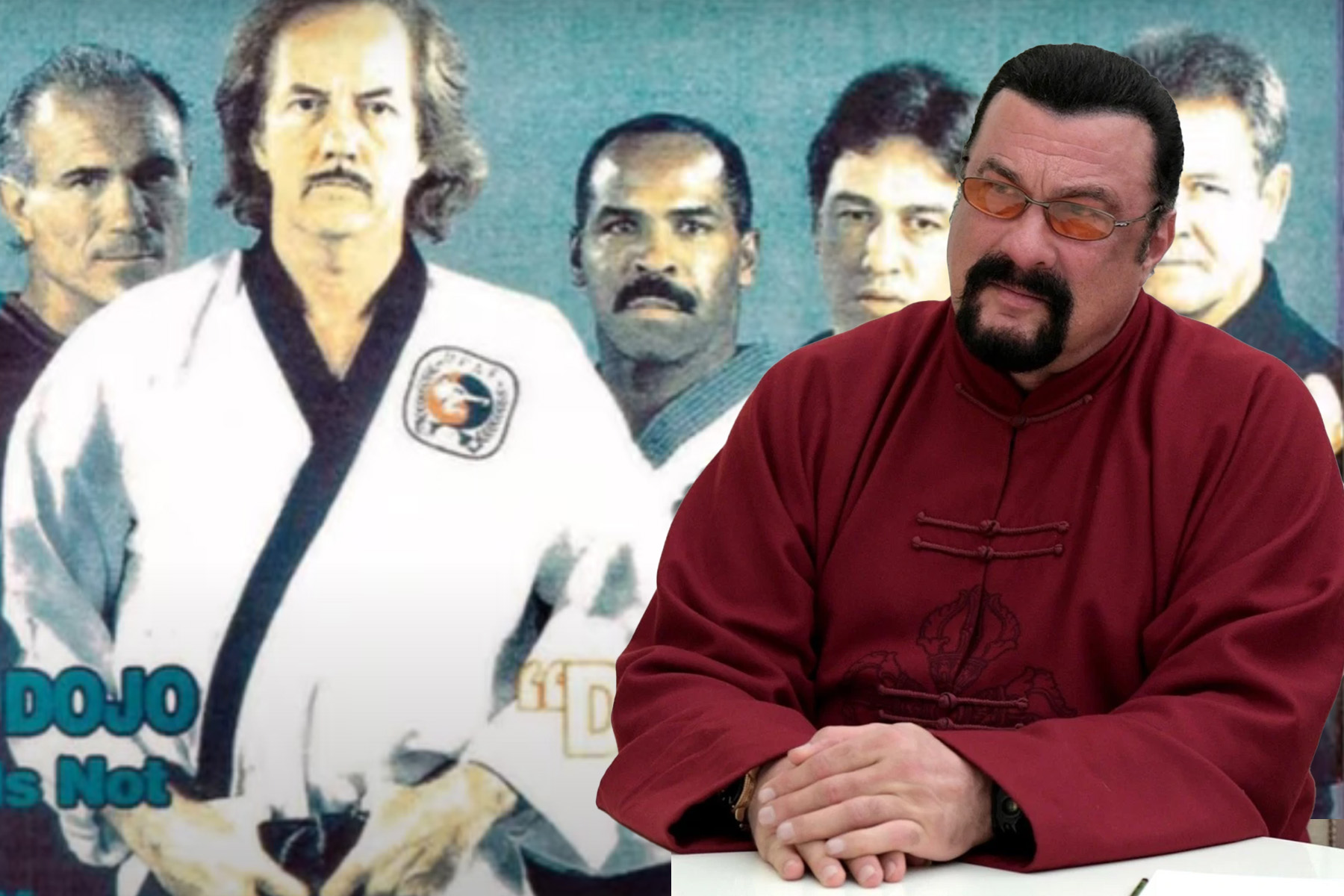In the late 1980s, a remarkable controversy erupted in the martial arts world when twelve prominent fighters were assembled for what became known as the “Dirty Dozen” challenge – a million-dollar proposition to fight Steven Seagal. The saga, which played out primarily in the pages of Black Belt Magazine, began with alleged disparaging comments and evolved into one of martial arts history’s most talked-about unfulfilled showdowns.
According to martial arts veteran Richard Norton, the controversy’s roots traced back to alleged disparaging comments Seagal made about Chuck Norris. While Norris himself reportedly wanted no part in the ensuing drama and stayed above the fray, his close associate Bob Wall took up the mantle of defending Norris’s reputation.
In response to Seagal’s alleged comments, Wall orchestrated what would become the “Dirty Dozen” challenge. The roster included notable martial artists such as Benny Urquidez, Jim Harrison, Alan Steen, Blinky Rodriguez, Gene LeBell, and Wall himself. The challenge came with a significant incentive: a million-dollar prize that Wall claimed to have secured.
Interestingly, Richard Norton was surprised to find himself named as one of the Dozen, having never agreed to participate. Norton learned about his involvement through an unexpected call from Black Belt Magazine and immediately distanced himself from the challenge, maintaining his respectful friendship with Seagal.
The situation became significant enough that Seagal personally reached out to Norton to discuss the matter. “I get a call… from Steven saying he was disappointed to see my name there, saying I was one of the few martial artists he respected in America,” Norton recalled. Their subsequent meeting at Warner Brothers Studio, where Seagal had an office during his peak movie career, led to a frank discussion about the challenge.
Norton advised Seagal that the challenge represented a “no-win situation,” suggesting that a loss would be damaging, and even a victory could result in legal issues. While some fighters like Benny Urquidez expressed willingness to accept if formally challenged, the proposed fights never materialized.
The controversy reached its peak through the pages of Black Belt Magazine, which became the primary platform for the challenge. The publication capitalized on the growing tension, featuring the story prominently and dedicating a cover to the Dirty Dozen members. As Norton observed, “Black Belt are all excited about it because it sells magazines,” highlighting how media coverage amplified the conflict.
The controversy created divisions within the martial arts and film stunt community. According to Norton, professionals often found themselves having to choose sides, which affected working relationships in Hollywood. While the highly publicized challenge never materialized into actual fights, it remained a notable chapter in martial arts history.
Norton, who knew both Seagal and Norris professionally, attempted to maintain neutrality in the situation. His account suggests that while there was genuine tension between Seagal and Norris, much of the conflict was amplified by media coverage and third-party involvement, particularly through Black Belt Magazine, which benefited from the increased attention and magazine sales generated by the controversy.


